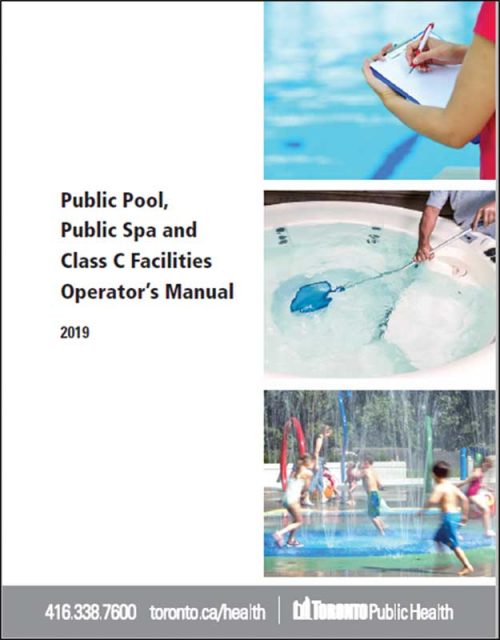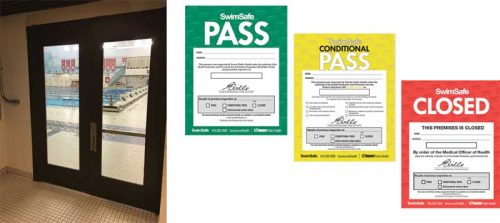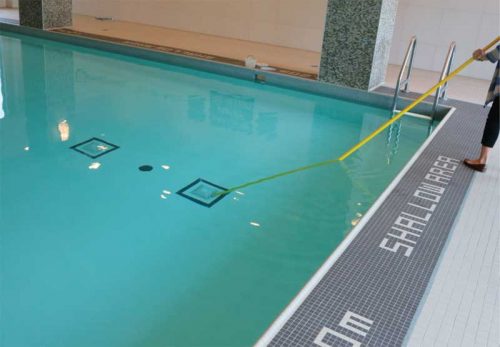Public Pool Regulation 565

Design innovations combined with modern technologies—such as powerful pumps, disinfection systems, and filtration methods—have health and safety consequences, which were not common in the 1900s. Although periodic amendments to pool regulations addressed such emerging impacts, a comprehensive modernization of the recreational water regulations in Ontario was long overdue. On July 1, 2018, Ontario’s Ministry of Health and Long-Term Care (MOHLTC) modernized and enacted several public health regulations including the Public Pool Regulation 565 and the Recreational Camps Regulation 568. When updating the existing regulation, the Ministry’s primary aim was to develop a regulation that was streamlined, concise, user-friendly, and supported innovation. Further, the regulation intends to set clear expectations, is based on evidence and outcome, and most importantly, benefits public health and safety.
The process to modernize the regulation began in 2015. Various stakeholders such as industry and public health groups and inter-ministerial/governmental agencies were consulted. As a result of the consultation process, more than 100 recommendations were identified. The process was completed in December 2017, and the new pool regulation incorporated many recommendations from technical, scientific, and policy groups.
The modernized Public Pool Regulation 565 is fundamentally different from its predecessor. Previously, separate pool and spa regulations laid out requirements for the respective facility types. However, the new regulation merges the requirements of the previous two regulations. It extends minimum public safety and facility operational requirements (e.g. supervision, disinfection, safety equipment, and signage) to wading pools and splash pads that were previously non-regulated, recognizing these facilities also pose health and safety risks similar to public pools and spas.

The previous spa regulation required every spa operator to be trained in operation and maintenance, filtration systems, water chemistry, and relevant safety and emergency procedures. This requirement is carried over to the new Public Pool Regulation 565 where it applies to pools. To support such training, the Recreational Water Protocol, 2018, requires local BOHs to make the following available:
- Information and/or education materials to owners and operators regarding applicable regulations and operational procedures relevant to public recreational water facilities and camps.
- Recreational water training program materials that include, but are not limited to:
○ applicable public health legislation and regulations;
○ prevention of illness, injury, or death;
○ water chemistry;
○ sanitary operation of amenities in the facility;
○ provision of safety equipment;
○ emergency communication and procedures;
○ safety supervision;
○ applicable admission standards; and
○ recordkeeping.
Coinciding with the enactment of the new Public Pool Regulation 565, the Chief Justice of Ontario established set fines for infractions under the legislation. Previously, for both the pool and spa regulations, the only option available to Public Health Inspectors (PHIs) was to issue a Part III Summons under the Ontario Provincial Offences Act (POA). However, with the new set fines, PHIs have flexibility in issuing tickets with set fines or a summons, based on a number of considerations.
Public disclosure

In spite of enforcement remedies available to public health units, historical evidence for compliance with various regulations, including public pools, spas, and food safety inspections indicated a persistently high level of non-compliance. To address this high rate of non-compliance, Toronto Public Health (TPH) first introduced public disclosure of restaurant inspection results in 2001. Since its implementation, in addition to achieving a substantial increase in compliance rate (with the regulation), many advantages of public disclosure have become evident. This kind of transparency empowers the public to make informed decisions before choosing to use a facility. It promotes public trust and significantly supports enforcement by creating a strong incentive for owners and operators to comply with applicable legislation.
Learning from this experience, in 2015, TPH expanded public disclosure to public pool and spa inspections. The modernized regulation acknowledges the value of disclosure to public health and safety and, therefore; requires facility operators to post inspection results. As such, TPH’s recreational water facility disclosure system aligns with the Recreational Water Protocol requiring public health units to disclose inspection results to the public.






